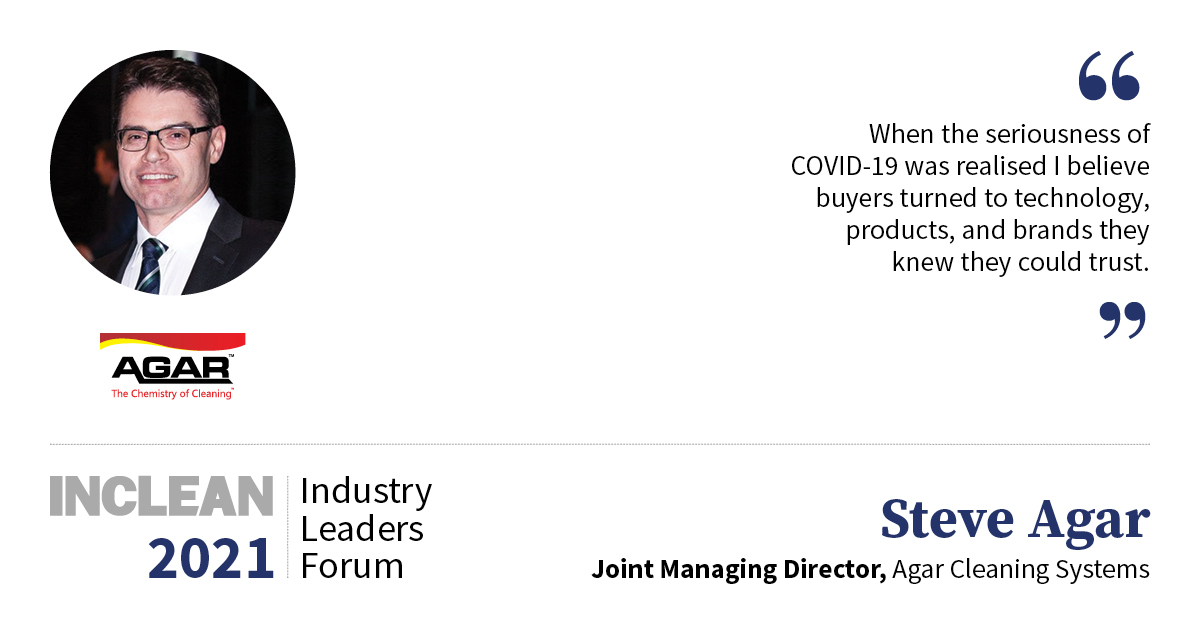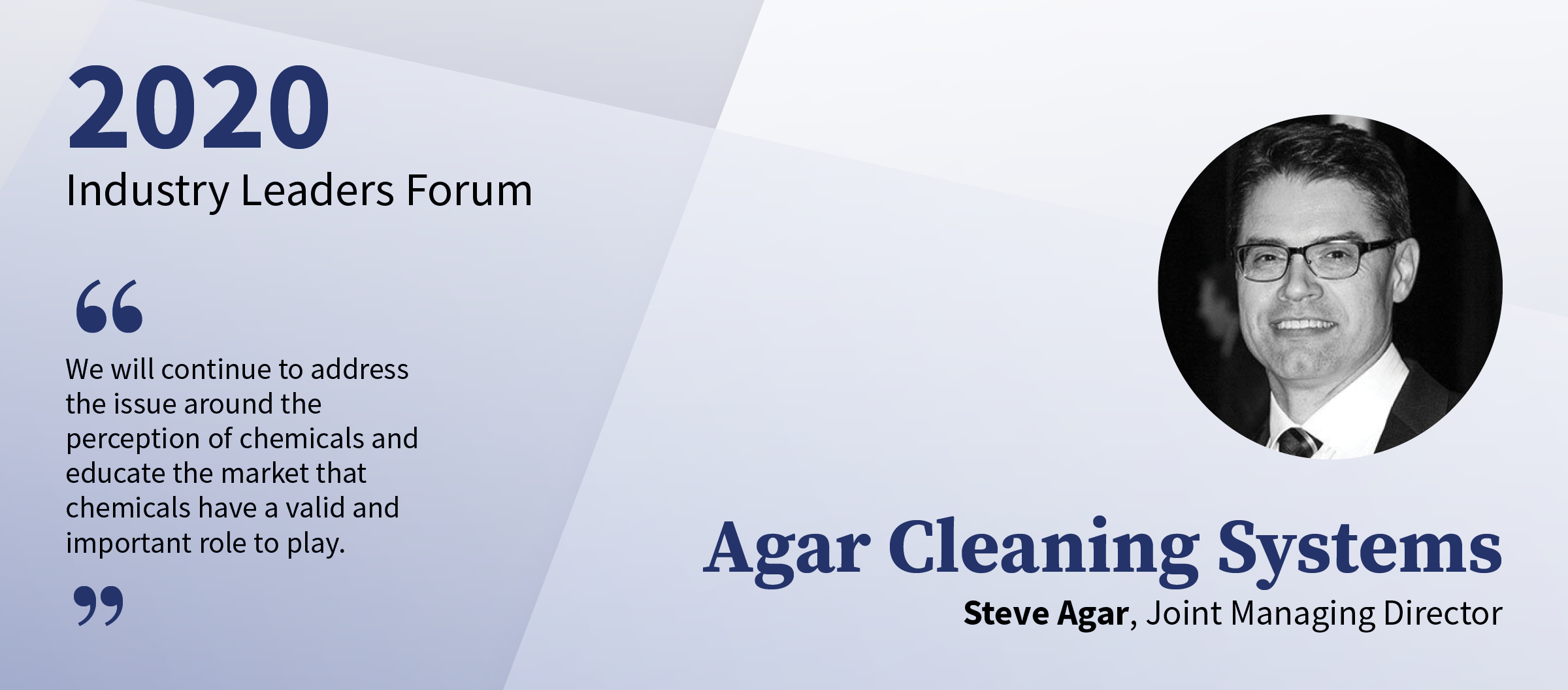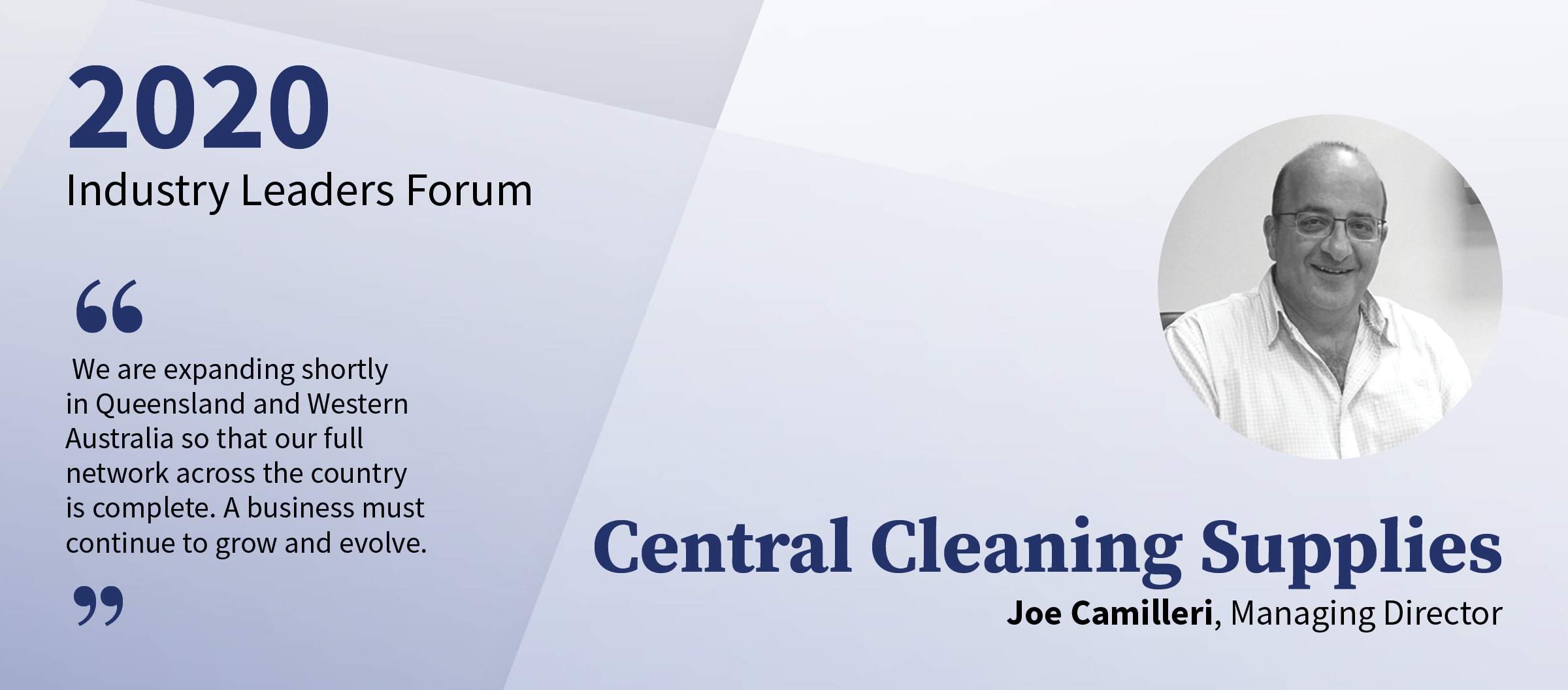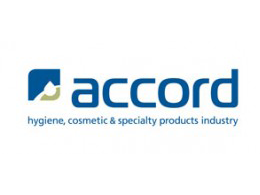
How was 2020 for Agar? What were the highlights? What were the challenges?
2020 was an extraordinary year for all of us. When COVID-19 appeared in Australia, and both the consumer and B2B markets were looking to ramp up cleaning and disinfection, it was chemical products they turned to. Consequently, we saw a couple of serious spikes in demand for our products, particularly disinfectants.
A highlight for me was that we were able to provide ongoing stable employment for our valued staff at a time when many businesses were cut severely or closed. I’m highly appreciative of our staff who’ve been excellent in working tirelessly, particularly at our branch sites.
We had a major challenge in dealing with sudden shifts in customer demand, combined with supply issues with raw materials and packaging relevant to our products in high demand.
March was especially challenging, when customers were ‘panic’ buying up all sorts of cleaning product supplies, not just disinfectants and sanitiser, presumably because they were worried that manufacturers and distributors might have to cease operation for an extended period.
Eventually though the restrictions imposed by our governments and the economic slowdown certainly had a negative impact on the sales of our wider product range.
How did Agar adjust to the impact of the pandemic?
To be honest, we are still adjusting. Already having products with relevance to the fight against the virus, we needed to increase of capacity to manufacture these products.
In the early stages when demand for disinfectants and hand sanitisers soared, our production and dispatch teams worked a lot of overtime.
We had to deal with shortages of key raw materials which are normally ordered weeks, if not months in advance. At the peak of the demand, we had to make some tough decisions about what we could supply and to whom, because we simply couldn’t supply enough to meet the total demand.
Having already been successfully tested on other viruses, we selected our new CounterFlu disinfectant for testing on the surrogate viruses and obtaining TGA certification and ARTG listing with a claim of efficacy on SARS-CoV-2 (COVID-19 virus). We have recently released a ready-to-use (RTU) version of this product for convenience and ease of use.
As an essential business and manufacturer, we had to establish our own COVID-safe plans for the safety of our staff and to ensure our own business continuity.
What will be the immediate focus for Agar in 2021?
We’re aiming to get back to our pre-COVID business plan, albeit updated to the new “COVID-normal”.
As they say, life goes on, and the direction we’ve been taking recently with product development is still relevant, especially in reducing environmental impact and improving operator safety.
We released a number of new products prior to the pandemic, but these had to take a back seat for obvious reasons. We will now promote these more widely, in the context of the altered reality we’re now living in.
During the pandemic, there has been much greater reliance on e-commerce and online communications, and with all of the convenience all this provides we will focus more attention in this area.
What challenges and opportunities do you see for Agar in 2021?
We will have no choice than to adapt to changes in the business landscape post-COVID. As the built environment evolves to deal with changing use of office and retail space, the priorities for cleaning, hygiene, and asset protection, and therefore product demands, will also shift.
There is always plenty of opportunity for high quality products which improve cleaning productivity and outcomes.
We must be responsible in the formulation and manufacture of chemical cleaning compounds so that we minimise and preferably eliminate any safety and environmental risks and continue to provide the labour-saving cleaning solution that better quality chemicals can provide.
The other points are contingency planning and supply chain management. I believe we navigated our way through a difficult period pretty well, but we need to learn from what happened and resolve any weaknesses that emerged under severe strain.
What challenges and opportunities do you see for the wider industry over the next 12 months?
We all know the pandemic has highlighted the important role cleaning and disinfection plays in human health and protection from infection.
In particular, we’ve been reminded cleaning must be frequent and thorough. How often have we seen vision on the nightly news of cleaners applying disinfectants in public places, inside train carriages and so on?
This presents an opportunity to reinforce the value of and improve the perception of cleaning services. You would expect that those cleaning service providers with the systems and technology to be able to demonstrate they have achieved the specified outcomes will win the best contracts and earn better margins.
The challenge will be dealing with complacency, and to resist pressure to unrealistically absorb the cost of providing more frequent and thorough cleaning with the best methods and technology.
Whilst the latter can bring better efficiency and productivity, the priority is the health and well-being of building occupants, by delivering a full specification provided by trained staff who are paid the correct wages.
With the pandemic, we have seen a plethora of new cleaning products and technology launched globally. This presents an opportunity for the cleaning industry to innovate and improve their service delivery and outcomes, but within this comes the challenge of sorting the genuine advances from superficial marketing exercises simply taking advantage of the situation.
Have you seen changes in buying trends/customer behaviour since the pandemic? How has Agar responded to these changes?
When the seriousness of COVID-19 was realised I believe buyers turned to technology, products and brands they knew they could trust.
Perhaps ironically given the discussion around chemicals in recent years, when things became dire with the pandemic, it has been chemical disinfection technology that people have turned to and relied on.
The decision making of buyers has been influenced by the various health departments and their guidance on appropriate cleaning and disinfection during the pandemic.
An example is the fogging of disinfectants, which after an initial surge fell away following doubts raised about the consistency of application and the question of whether the presence of soil would negate the efficacy of the disinfectant.
Looking at the future – both short and long term – what do you see, as far as changes and adjustments, that the global cleaning industry must embrace?
In summary, I would say doing more with less. This means greater cleaning productivity and better hygiene and soil removal while using less energy and producing less waste.
It can be achieved by training cleaners better, looking for and selectively implementing better technology and using better quality ‘tools ‘(good quality, high performance cleaning compounds of which you use less, but achieve more).
With regard to consumables, hardware and machinery surely it’s better to wash, re-use, re-cycle, repair, re-deploy or even re-purpose than to throw away a resource after only one of a few uses?
What is one issue the industry should urgently address in 2021?
There are many issues to address, but in terms of urgency I would say the time is right to reinforce the value and importance of cleaning, not only to our health and infection control, but also to prevent business interruption.
Along with recognising the importance of thorough cleaning comes the understanding that cleaning staff need to be properly trained, supervised and paid.
Service providers can only deliver thorough cleaning with well-treated and well-trained staff if facility managers are willing to pay what it’s truly worth. Reducing environmental impact is also critical.
What additional advice or guidance do you have for the cleaning community now and after the pandemic?
- Be more familiar with the technical and ‘coal-face’ aspects of the cleaning services you provide, and don’t stop educating building occupants about the need for regular thorough cleaning by properly trained operators.
- Demonstrate to clients that by outsourcing their cleaning services they have engaged experts in their field.
- Partner with suppliers and brands you can trust, and be wary of unsubstantiated claims about products, especially with vague statements about efficacy and outcomes.
- Recruit good staff, train them well and try to keep them.
- Buy Australian made!
This article first appeared in the January/February issue of INCLEAN magazine.
Read the original article here.
Comment below to have your say on this story.
If you have a news story or tip-off, get in touch at info@3.106.117.80.
Sign up to INCLEAN’s newsletter.


